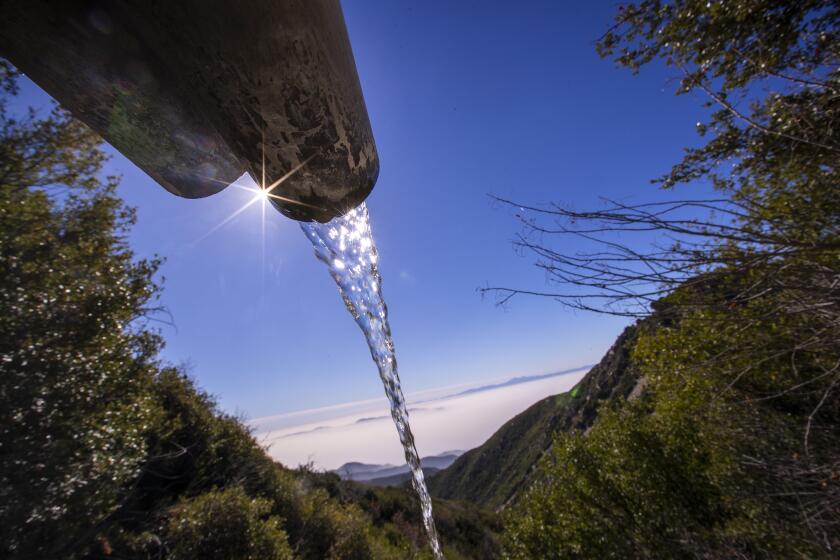
- Share via
- Suit claims Edison’s negligence in maintaining its infrastructure triggered the Eaton fire, exposing people to the fallout of levels of lead, asbestos and other toxic substances.
- Edison said it would review the suit, but noted that the fire’s cause is still under investigation.
Southern California Edison was hit with another lawsuit in the wake of the Eaton fire Wednesday, with lawyers claiming families living in or near areas devastated by the Eaton fire may have suffered from dangerous levels of lead, asbestos and other toxic substances.
The Los Angeles County Superior Court suit claims Edison’s negligence in maintaining its infrastructure triggered the Eaton fire, exposing people nearby to the fallout of lead, asbestos and other toxic substances.
The lawyers cited an investigation by The Times in which the testing of soil samples at two home sites found toxic heavy metals in excess of California standards even after federal crews removed ash and topsoil.
Edison officials have acknowledged that their equipment may have ignited the devastating fire, but have cautioned that the cause remains under investigation.
“Our thoughts are with all community members who have suffered losses due to the January fires,” Edison spokesman Jeff Monford said when asked for comment on the suit. “The cause of the Eaton fire has not yet been determined. We will review this lawsuit and respond in the litigation.”
Edison has been hit with multiple suits in the wake of the wildfire, which destroyed thousands of homes and businesses in Altadena and killed 18 people. Videos captured it igniting on Jan. 7 under one of the utility’s transmission towers. The company says the reenergization of an idle transmission line is now a leading theory of what sparked the inferno.
The lawsuit filed Wednesday was brought by California Fire Victims Law Center on behalf of Amber Diaz, the guardian of a minor identified as W.F.F. The complaint says the family’s home was “extensively damaged by smoke and ash” but is still standing. The suit seeks class-action status.
A Times investigation finds toxic levels of lead in soil in Altadena and Pacific Palisades that the government refused to test after the L.A. wildfires.
Altadena was vulnerable to lead contamination after the fire because most of its homes were built in the 1920s through 1950s — well before lead paint was officially banned in the U.S.
“No level of lead exposure is safe, especially for children where even the lowest levels can cause permanent damage to developing brains and long-term health,” said Kiley Grombacher, one of the lawyers bringing the suit. “This public health crisis could have been prevented had Southern California Edison fulfilled basic safety obligations to properly maintain its electrical infrastructure.”
It asks for compensation for residents harmed by the toxic substances as well as money for medical monitoring of their health into the future.








